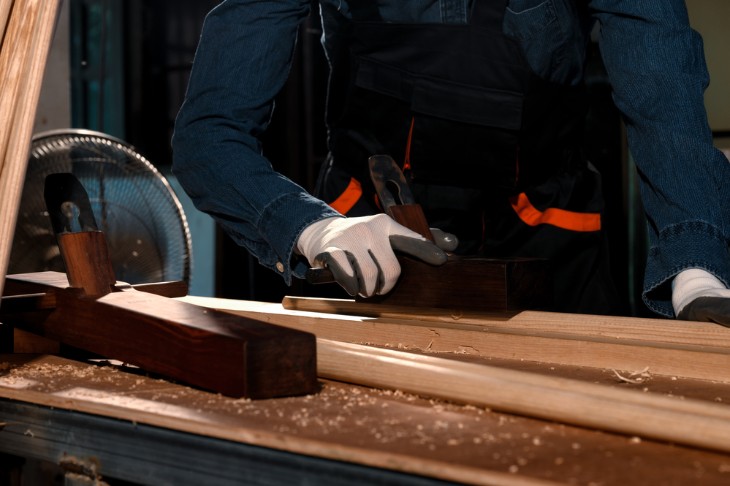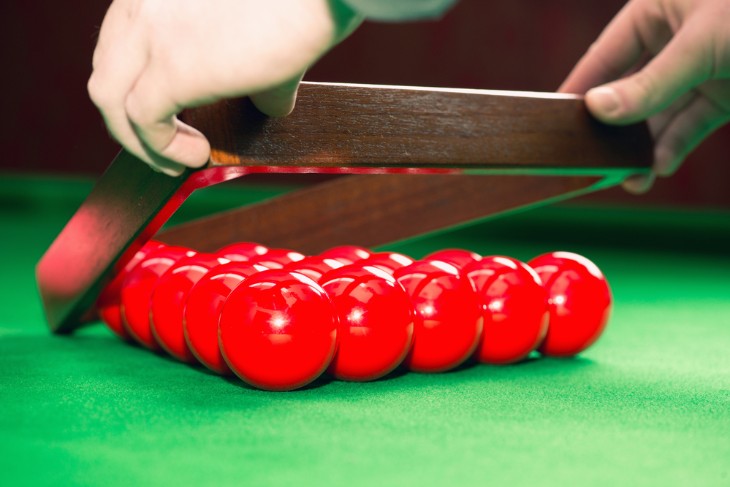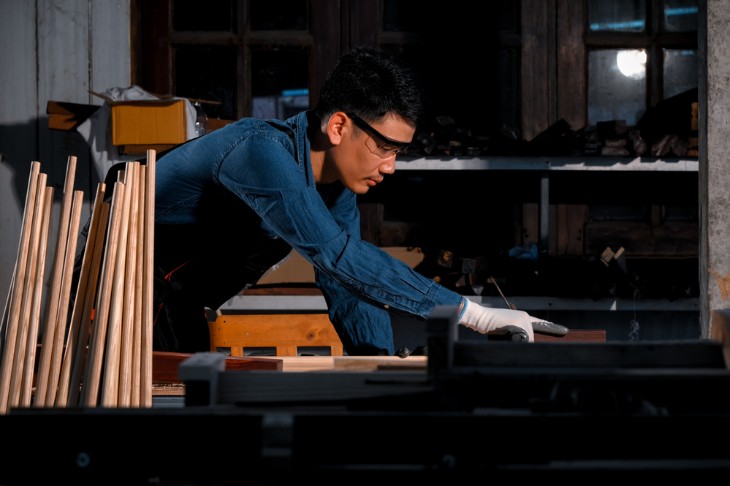Snooker cues are more than just sticks. They are carefully made to help players do their best. The main part of a cue is made of wood. This wood needs to be strong and flexible. It helps the cue stay straight and move smoothly.
But there's more to a cue than just wood. The tip, the end that hits the ball, is usually made of leather. This tip needs to be the right shape and texture. It helps control the ball and make precise shots.
This article takes a closer look at what goes into making a snooker cue. From the wood used to the way it's put together, every part matters.
The Primary Material - Exploring the World of Woods
Wood - The Heart of the Snooker Cue
Wood is the main material in a snooker cue. It gives the cue its shape, feel, and how it plays. Let's look at why wood is so important and what types are used.
Ashwood is the most common choice for snooker cues. It's popular because it's strong and doesn't bend easily. This strength helps the cue stay straight, which is key for accurate shots. Ash also has a clear grain pattern. This not only looks good but helps players grip the cue better.
Another wood often used is maple. Maple cues are smooth and have a lighter colour. They are a bit softer than ash cues. This can give a different feel when playing. Some players prefer this, as it can offer more control.
For top-quality cues, exotic woods like ebony and rosewood are used. These woods are heavier and more dense. They add weight to the cue, especially at the bottom end. This can help with balance and make the cue feel more stable in your hands.
The way the wood is cut and shaped is also key. Good cues have a straight grain that runs the length of the cue. This keeps the cue strong and stops it from twisting. The wood is also dried out properly before being used. This stops it from warping or changing shape later.

Exotic Woods for the Professional Touch
Professional snooker cues often use exotic woods. These woods are not just for looks. They change how the cue feels and plays. Let's explore these special woods and why they are chosen.
Ebony is a popular choice for high-end cues. This wood is very hard and heavy. It adds weight to the cue, especially at the butt end. This extra weight can help with balance. It makes the cue feel more stable and solid in your hands. Ebony is also dark in colour, which gives the cue a classic, elegant look.
Another exotic wood used is rosewood. Rosewood is strong and durable. It's often used for the part of the cue you hold, called the butt. This wood has a rich colour and a smooth finish. It feels good in your hands and looks great too.
Maple is also used in professional cues. It's lighter and has a fine, even grain. This makes the cue smooth to the touch and consistent in play. Maple cues are often chosen for their sleek appearance and steady performance.
These exotic woods are not just picked for their looks. They are chosen for how they affect the cue's performance. The weight, balance, and feel of the cue can all be changed by using different woods. This lets players choose a cue that fits their style of play.
The Art of Joining - Splices and Joints
Splicing - Combining Woods for Performance and Beauty
Splicing is a key part of making snooker cues. It's where different woods are joined together. This process is not just about making the cue look good. It also affects how the cue plays. Let's see why splicing is so important.
In splicing, craftsmen join woods like ash or maple with exotic woods like ebony or rosewood. They do this carefully, so the woods fit together perfectly. This joining is not just for decoration. It changes the weight and balance of the cue. This can help players get more control and power in their shots.
The way the woods are spliced together also makes each cue unique. The patterns where the woods meet can be simple or complex. Some cues have intricate designs, showing off the skill of the cue maker. These designs can be straight lines, V-shapes, or more detailed patterns.
Splicing is a blend of art and skill. It takes time and a steady hand to do it right. The cue maker has to choose the right woods and cut them just so. Then they join them together, making sure the joint is strong and smooth.
Joint Types and Their Impact on Play
The joint of a snooker cue is where it splits into two parts. This joint is not just for breaking the cue down for easy carrying. It also affects how the cue plays. Let's look at different joint types and how they change the game.
There are mainly two types of joints in snooker cues: the quick-release and the threaded joint. The quick-release joint is fast to use. You can join or separate the cue in seconds. This is handy for players who need to set up or pack away their cue quickly. The connection in a quick-release joint is firm and snug. This means the cue feels solid when you play.
The threaded joint takes a bit longer to use. You have to screw the two parts of the cue together. But this type of joint gives a very tight and secure connection. Some players feel this makes the cue more stable. It can also make the cue feel like one solid piece, which is good for precision shots.
The material of the joint is usually metal, like brass or stainless steel. These metals are strong and last a long time. They keep the joint from wearing out or getting loose. A good joint should be able to take lots of use without any trouble.
The type of joint in a snooker cue matters. It changes how quick and easy the cue is to use. It also affects how the cue feels when you play. Whether it's a quick-release or a threaded joint, the key is a firm, stable connection. This helps players make accurate, consistent shots.

Beyond Wood - Additional Materials in Snooker Cues
The Role of Metals in Cue Construction
Metals are important in making snooker cues, though they are used less than wood. They play a key role in certain parts of the cue. Let's explore where metals are used and why they are chosen.
The joint and the ferrule are the main parts where metal is used. The joint is where the cue splits in two. Here, brass or stainless steel is often used. These metals are strong and don't wear out quickly. They make sure the joint stays tight and the cue feels like one piece when put together.
The ferrule is the small part at the tip end of the cue. It connects the tip to the rest of the cue. Here, brass is the usual choice. Brass is hard and keeps its shape well. This is important because the ferrule needs to hold the tip firmly. Any movement here can change how the ball is hit.
Metals are also used for weight and balance. Sometimes, small metal weights are added inside the cue. This lets players adjust the weight to suit their style. A heavier or lighter cue can change how it feels to play.
Metals are used in snooker cues for strength and precision. They are not as visible as the wood, but they are just as important. The right metal in the right place can make a big difference. It can change how the cue feels and how well it plays.
Innovative Use of Synthetic Materials
Synthetic materials are now part of snooker cue-making. These materials bring new features to cues. Let's see how these materials are used and what they add to the game.
Carbon fibre is a popular synthetic material in cues. It's used mainly in the shaft, the long part of the cue. Carbon fibre is very strong but also light. This makes the cue sturdy without being too heavy. A carbon fibre shaft is also very straight and stays that way. It doesn't warp or bend like wood can. This means the cue plays the same way over time.
Rubber and silicone are used for the part of the cue you hold, the butt. These materials give a good grip. They stop the cue from slipping in your hand. This is important for making steady, controlled shots. Rubber and silicone also make the cue more comfortable to hold. This can help players play for longer without their hands getting tired.
Some cues have synthetic tips instead of leather. These tips don't wear down as fast as leather. They keep their shape better, which can make shots more consistent. But, the feel of a synthetic tip is different from leather. Some players prefer this, while others like the traditional feel of leather.
Synthetic materials are changing snooker cues. They add strength, stability, and comfort. They can also change how the cue plays and feels. This mix of traditional and modern materials lets players choose a cue that suits their style and needs.
Key Takeaway
Understanding what snooker cues are made of shows the skill in making them. From wood to metals and synthetics, every part is key. Let's wrap up what this all means for the game and the players.
Making a snooker cue is about blending materials and skills. It's about tradition and innovation. Each cue is a mix of function, beauty, and personal touch. Whether you're a beginner or a pro, the right cue can make a big difference. It's a key part of the love and challenge of snooker.
For more information:






 (1).webp)






.webp)














